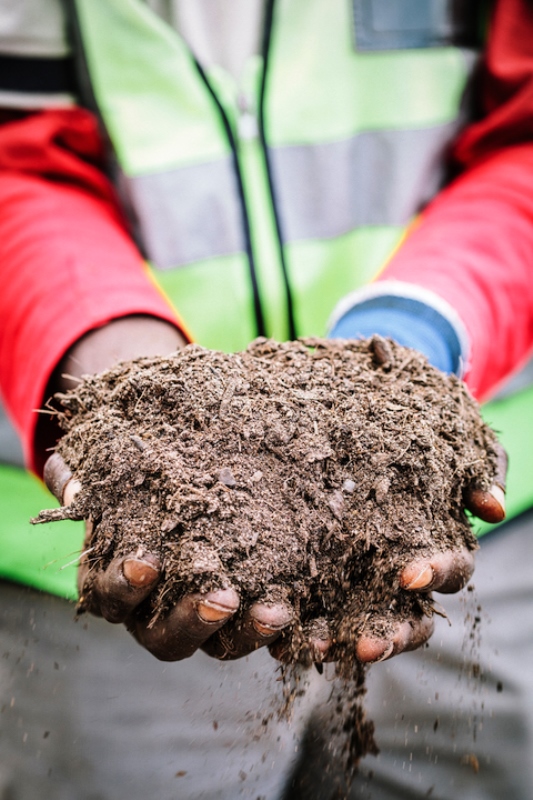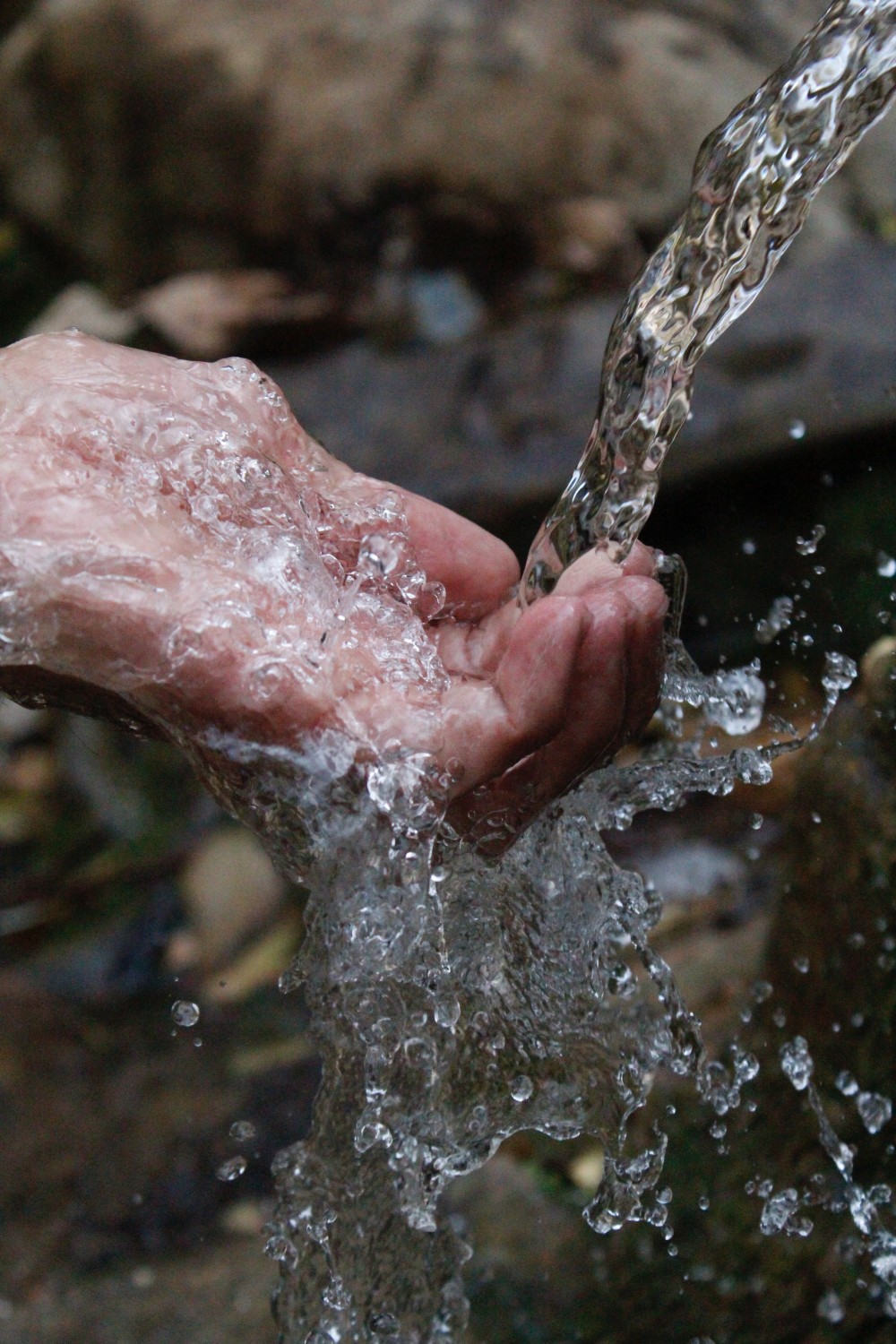What the tickers signify
The tickers show the difference in environmental impact of organic production and non-organic production, for all fresh fruit and vegetables that were sold by Eosta since 1 January 2020. Thanks to all organic Nature & More growers.
- the amount of water that was saved from usage or pollution (in liters of water)
- the amount of soil that was saved from erosion and wash-out, or even newly formed (in kilograms of soil)
- the amount of greenhouse gases that was saved from emission. The impact of emissions of all agricultural greenhouse gases (CO2, methane and nitrous oxide) are converted to CO2-equivalents. (in kilograms of CO2-equivalents, kg CO2e ).
The savings add up fast: each day we save 1.8 million litres of water, 90 metric tons of fertile soil and 11 tons of CO2e.
How should I picture such numbers?
- A lorry ful of soil is approximately 10.000 kg of soil, so every day our organic Nature & More growers are saving 9 truck loads ful of fertile soil.
- A person drinks 10.000 litres of water in 14 years (see also here), assuming 2 litres of water per day. So each day our growers save an amount of water sufficient to provide 180 peoples with drinking water. Alternatively, you can picture it as an Olympic pool three quarters filled with water.
- An average car that drives around the world will emit approximately tien metric tons of CO2e (see also here). So each day our growers save the emission a car driving around the world, 1.1 times.
The calculations
The numbers are calculated as follows. Firstly, we counted the total amount of sold products in 2020. Some important products are avocado's, lemons, mango's, pineapples, apples, pears, pomegranates, oranges, passion fruit, kiwi's and mandarins, but also vegetables like ginger, tomatoes and chicory.
For each product the impact on soil, water and CO2-emissions was calculated, relative to the impact of non-organic cultivation. This is not just dependent on the cultivation method, but also on the type of crop. The growing characteristics of a plant (annual or perennial, shrub or tree) have implications for the impact on soil and the water use and the amount of organic carbon stored in the soil. Not just cultivation, but also transport and packaging were included in the calculation.
The impact calculations were based on FAO models. For water use, e.g. these are the models:
- http://www.fao.org/land-water/databases-and-software/climwat-for-cropwat...
- http://www.fao.org/land-water/databases-and-software/cropwat/en/
Why organic agriculture saves soils
Organic soils suffer less from leaching, erosion and degradation. This is a direct consequence of the organic approach. Organic farmers have fewer options for (chemical) intervention, therefore soil quality is their most important tool to support plant health. They use organic compost and natural fertilizers instead of synthetic fertilizers. They do not use chemical-synthetic pesticides that would otherwise affect soil life. They make more use of crop rotation and cover crops. They are careful with plowing and heavy machinery to avoid compressing the soil. Soil life such as earthworms play a major role in keeping the soil aerated and fertile. This helps to maintain organic carbon and humus levels and a good soil structure. As a result, less soil is washed away and less soil is degraded.
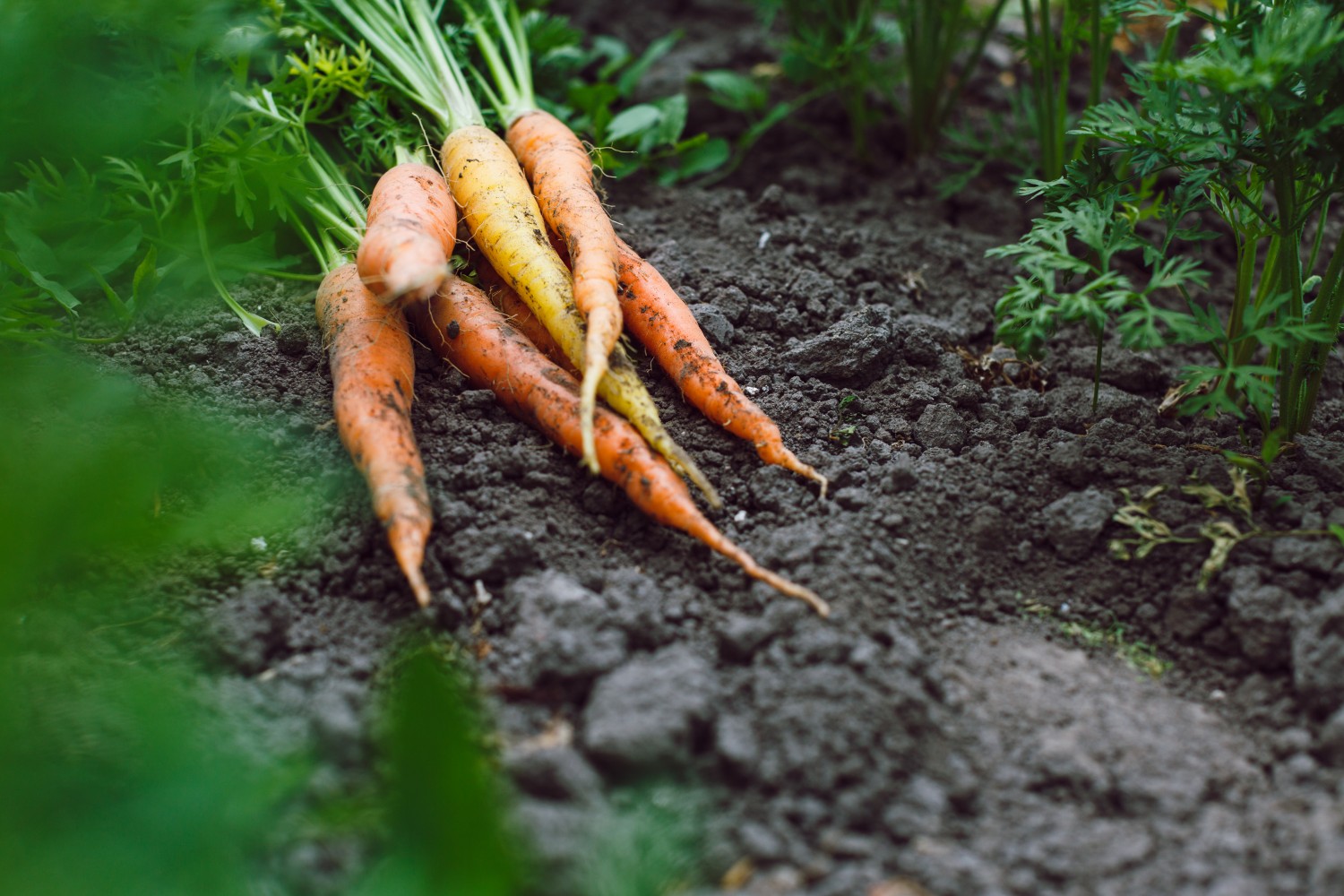
Why organic is better for the climate (CO2)
Organic farming is climate-smart. Organic farmers taking care of the soil play a key role in this. Greenhouse gas emissions are lower because organic does not use inputs such as artificial fertilizers and synthetic pesticides. These non-organic inputs are usually made and applied with major fossil fuel usage. So that makes a difference. In addition, organic soils sequester more carbon, because compost and ground cover are used, and soil life is more abundant. In many organic farms the scale of work is smaller, so more handwork is done and less machinery is used, which can save diesel consumption. Additionaly, organic soils are more resistant to droughts and flooding.
Why organic is better for water usage
Organic farming uses less water and keeps water clean. The reasons can be found both above ground and in the soil. Organic soil has a better water holding capacity due to its better structure and higher organic matter content. Rainwater and irrigation water are used more efficiently. Artificial fertilizers and chemical-synthetic pesticides are not used, so they cannot leach into surface water or groundwater. Research shows that the difference in water efficiency is 20% to 40%. Soil & More Impacts used the most conservative estimate, 20%.
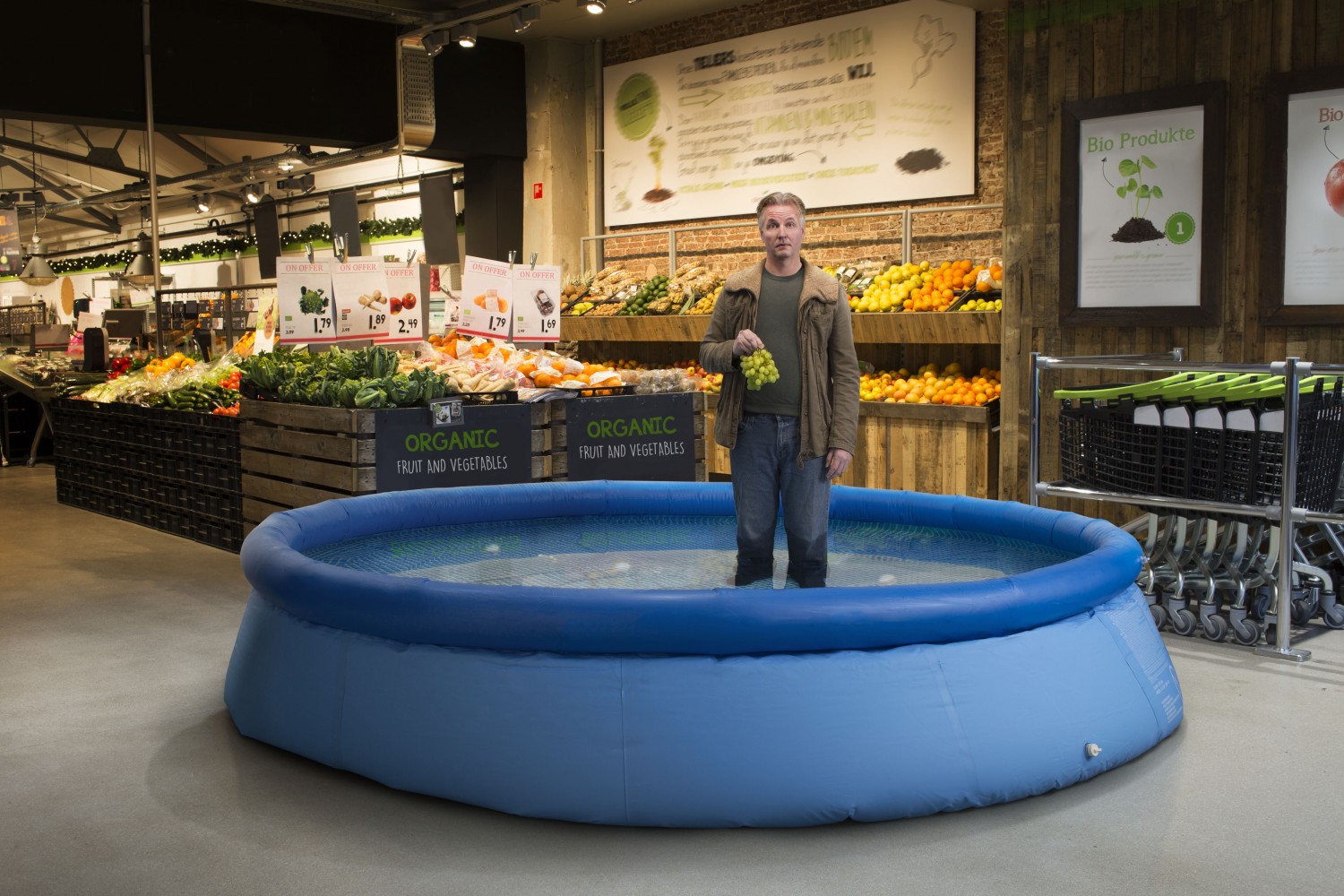
Example: avocado's
Calculations show that per kilogram of organic avocados, 88 liters of water are saved, if you compare it to conventional avacos. Per avocado, that amounts to about 17.6 liters of water. In addition, per kg of avocados, 1.1 kg of soil and 80 grams of CO2 emissions are saved. Eosta sold about 3.5 million kilograms of avocados in all of 2020. With these numbers it's then straightforward to calculate how the total savings for organic avocados increase by each second, hour, day, or month.
Of all of Eosta's products, when it comes to water savings, the difference between organic and conventional is greatest for avocados.
Eosta's largest avocado supplier is Anthony Ngugi in Kenya. His avocados come from smallholders, farmers who grow on a small scale in their home environment. These avocados are cultivated primarily using rainwater and without irrigation. The scale of cultivation benefits water use in this case. In addition to avocados, these smallholders grow other kinds of crops and practice intercropping. This ensures a better soil cover throughout the season, so there is less evaporation. High organic matter content in the soil also helps to retain water. Bare and degraded soils can't hold much water.
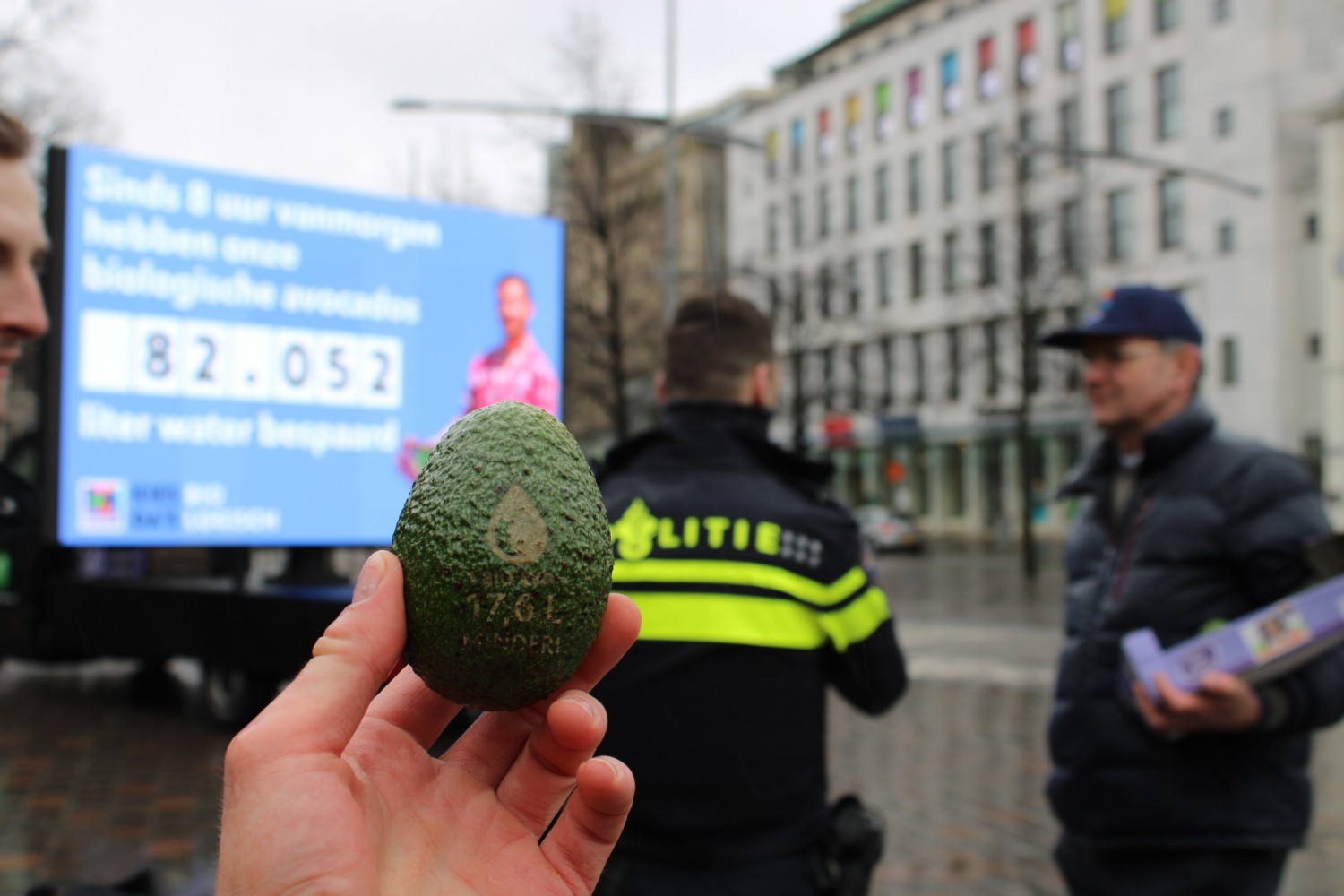
Who carried out the calculations?
Calculations have been carried out by Soil & More Impacts, based on FAO impact models. SMI is a Germany-based consultancy specializing in sustainable agriculture, ecological footprinting and True Cost Accounting. Previously, Soil & More Impacts has carried out impact analyses for ABN Amro Bank, GLS Bank and the FAO, among others.
Total savings since 1 January 2020
Between January 1, 2020 and March 1, 2021, Eosta saved (relative to conventional production) about 40 million kg of soil, nearly 5,000 tons of CO2e and 800 million liters of water. The tickers on the Eosta and Nature & More websites continue counting.


